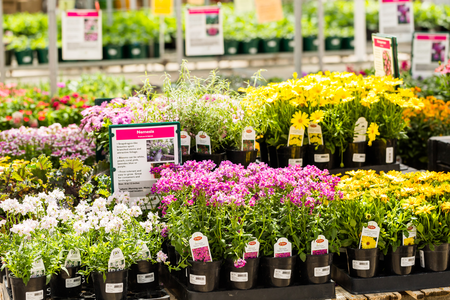Pagespeed: what can you do to improve your score?
We have written a few blogs about Pagespeed and Google’s upcoming Web Vitals update and we mentioned that Pagespeed will become even more important than it already is. Many improvements to your garden centre webshop or website are technical and will be done by us, but there are some things you can do yourself as well.
In this blog we will give you 3 things that you can do yourself to improve your Pagespeed scores.
Remind me, what is Pagespeed?
Before we share our tips with you, first a short recap: what is Pagespeed again? Pagespeed is a method that Google uses to determine your website’s speed. One set score generally doesn’t cover everything, for example, the speed differs for each page and every user. This could depend on:
-
The page that the visitor visits
-
The device he or she uses
-
The internet connection of the visitor
-
The user’s settings
Nevertheless, Pagespeed is a handy tool to use because it gives you an idea of what to improve on your website or webshop. You can use this tool to calculate your own Pagespeed.
Tip 1: Resize pictures
When you add pictures to the Garden Connect Platform, they will automatically be resized. You don’t have to do this manually as long as the pictures are smaller than 2 MB.
However, when you add the pictures through the editor, then you actually do need to pay attention. Sometimes users add a picture and they resize it in the editor. That might seem smart, but technically the following happens:
-
The user opens the website
-
The picture will be loaded in the original size
-
The browser will resize it
The second step is unnecessary and makes the pictures that your uploading too big. When you add the pictures in the editor, you first need to resize them. You can do this with tools such as Paint (that is indeed the tool that you have been getting for free with your Windows account for 20 years already) or Pixlr.com.
Are you not sure whether you’re uploading the pictures correctly? Did you change the image size in the screen below? If so, you are resizing the pictures in the editor which makes your website slower:

Tip 2: avoid plugins & external codes
In the Garden Connect Platform there is a possibility to use external tags. That’s handy because it gives you freedom and flexibility. Examples of external tags are:
-
Chat programmes
-
Hotjar
-
Kiyoh
-
Social media
-
Widgets
But these do come with downsides: every tag that you upload makes your website run more slowly. Make sure to limit the number of external plugins to only the most necessary. If you use a tool, ask the external party how you can implement this without lowering your website’s speed.
Tip 3: Load tags only once
More and more websites and webshops use Google Tag Manager to manage tags: that’s a practical tool, but you need to delete the tags that were on the website before. We see it regularly that all tags are loaded multiple times, which obviously causes delays.
When you are switching to Google Tag Manager, make sure to remove the existing tags from your website. You will usually find these on the settings page in the Garden Connect Platform.
On to the 100!?
The question that remains is: how can you reach “100” on Pagespeed? It’s not impossible and at Garden Connect we’re going to make some optimisation steps again to enhance the website speed. But is everything below 100 wrong? And why do Garden Connect websites (or other websites)not score 100?
Before we can answer that question: at the moment of writing this article Amazon.com scores 65/100.
Optimising a website is a combination of technique and content. To reach 100/100 every technical aspect should be 100% optimised, together with the content. Sometimes you just really want something on your website that allows you to reach more orders and conversions, at the cost of your Pagespeed. A good example is the chat function.
Should you abandon the chat function because it makes your website run slower? Of course not, if you want to use a chat function you should go for it.
Pagespeed (and the upcoming Google Web Vitals) are a good way to see what you can improve on your website. We use these points of improvement to enhance our platform and you can use them to optimise the content.
Avoid a one-dimensional concentration on Pagespeed scores only- there is more in the online life that counts!



